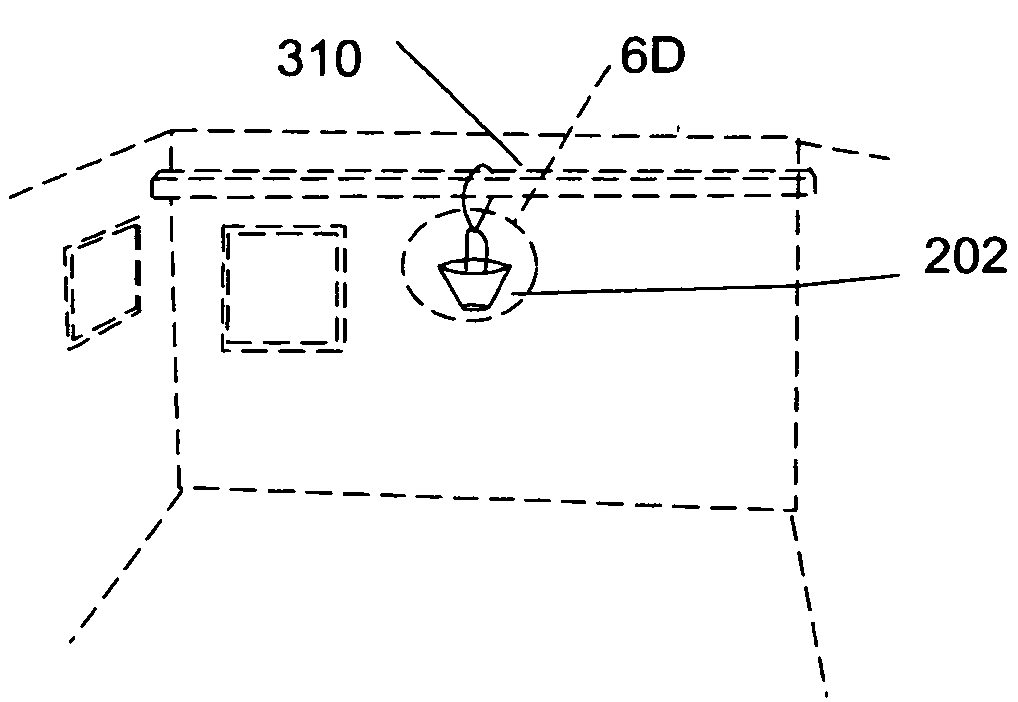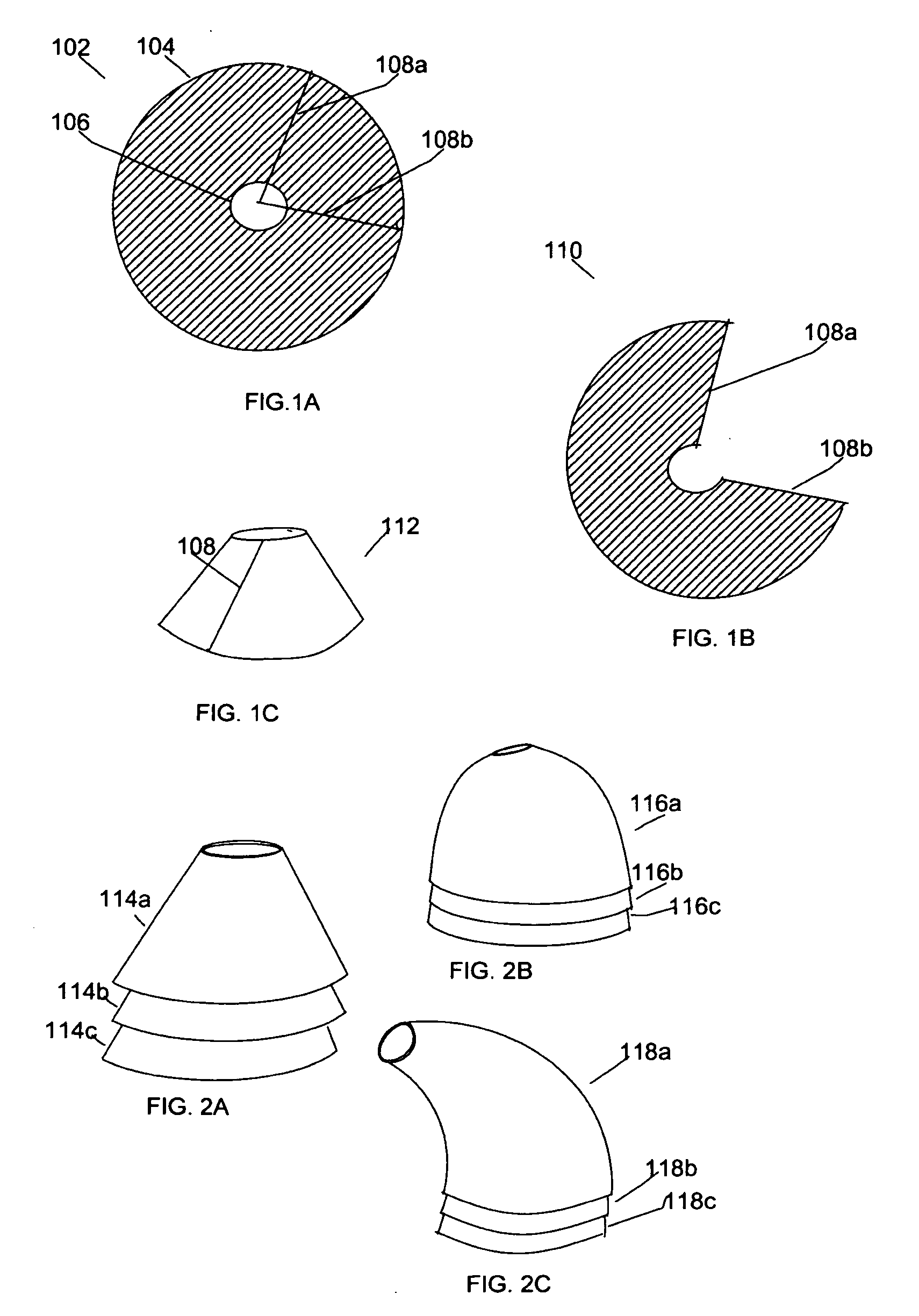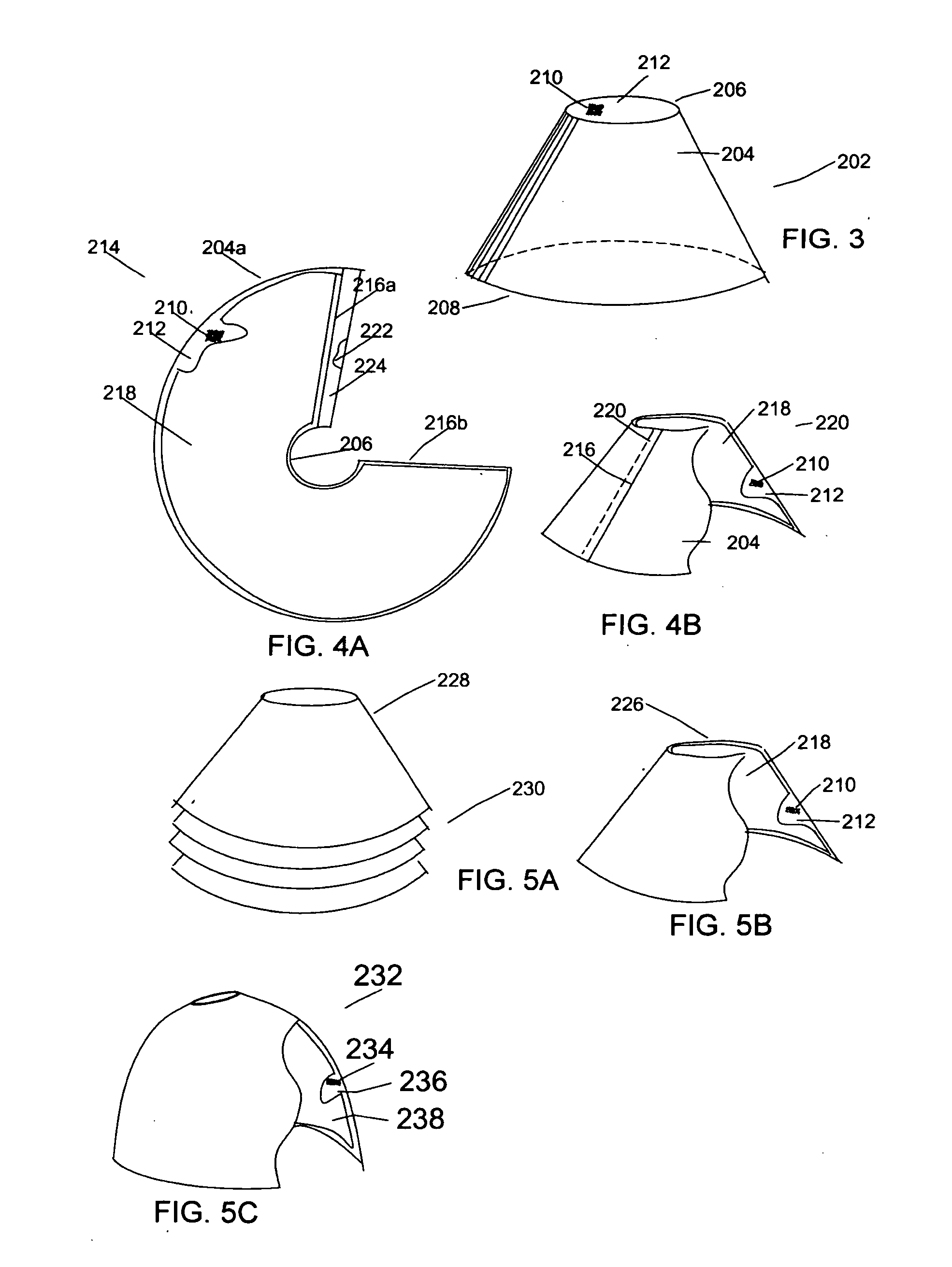Insect trap
a technology for insects and traps, applied in the field of insect traps, can solve the problems of unfavorable insect capture and capture, poor quality of insects, and difficult packaging, and achieve the effects of convenient packaging, deployment and disposal, and cheap manufacturing
- Summary
- Abstract
- Description
- Claims
- Application Information
AI Technical Summary
Benefits of technology
Problems solved by technology
Method used
Image
Examples
embodiment one
[0025]FIG. 3 displays the first embodiment in its deployed configuration 202. It consists of a hollow, substantially rigid, truncated cone 204 with a small opening 206 at the narrow end of the tapered cone and a second larger opening 208 at the wider end of the cone. Its interior surface 212 is substantially coated with sticky.
[0026]FIG. 4A illustrates the first embodiment in a packaged configuration as it would be stored or displayed in a merchant's store. FIG. 4B shows the ready to deploy configuration of the first embodiment constructed by reconfiguring the packaged configuration into a conical shape.
[0027]Referring now to FIGS. 4A and 4B, the ready to deploy configuration 220 of the first embodiment, constructed from the packaged configuration 214, consists of the truncated cone 204, with sticky 210 substantially covering the interior surface 212 of the truncated cone 204. The sticky is covered by a removable covering 218. The truncated cone 204 is constructed from a flat materi...
embodiment two
[0028]FIGS. 5A and 5B illustrate the construction of a second embodiment in its packaged configuration and its ready to deploy configuration. Referring to FIG. 5B, the ready to deploy 226 configuration of the second embodiment has the same structure of the ready to deploy configuration of FIG. 4B, but with one difference. Instead of constructing the truncated cone 204 from an annulus segment 204a, the truncated cone 228 is already manufactured as a hollow body. The truncated cone 226 has sticky 210 applied to its interior 212. The covering 218 is made from an annulus segment 218 as in FIG. 4A. FIG. 5A shows how this embodiment is packaged. Referring to FIG. 5A, several or many units of the second embodiment 228 are stacked one on top of the other 230. This will display nicely on a merchants shelf and will pack nicely for shipping. FIG. 5B show a ready to deploy unit. It is essentially the same as shown in FIG. 4B.
embodiment three
[0029]FIG. 5C illustrates a design for a third embodiment, the beehive design, that is in its ready to deploy configuration. The single beehive 232 has sticky 234 substantially covering its interior 236 (not shown in the figure). It also has a removable covering cover for the sticky 238. As in the second embodiment, the third embodiment is stackable as shown in FIG. 2B.
[0030]The size of the various embodiments may vary widely depending on their intended use. FIG. 6A shows the first embodiment of the insect trap used in a field where large animals, such as cows or horses, graze. A pile of animal dung 302 lies on the ground and attracts flies. The insect trap is placed over the dung, and will trap the flies as they are attracted to the dung. In this application the cone is relatively large, the height typically about 40.5 cm (16 in). A “muck bucket” filled with manure or other substances that attracts flies found in a field may also be used.
[0031]FIG. 6B shows a much smaller version o...
PUM
 Login to View More
Login to View More Abstract
Description
Claims
Application Information
 Login to View More
Login to View More - R&D
- Intellectual Property
- Life Sciences
- Materials
- Tech Scout
- Unparalleled Data Quality
- Higher Quality Content
- 60% Fewer Hallucinations
Browse by: Latest US Patents, China's latest patents, Technical Efficacy Thesaurus, Application Domain, Technology Topic, Popular Technical Reports.
© 2025 PatSnap. All rights reserved.Legal|Privacy policy|Modern Slavery Act Transparency Statement|Sitemap|About US| Contact US: help@patsnap.com



